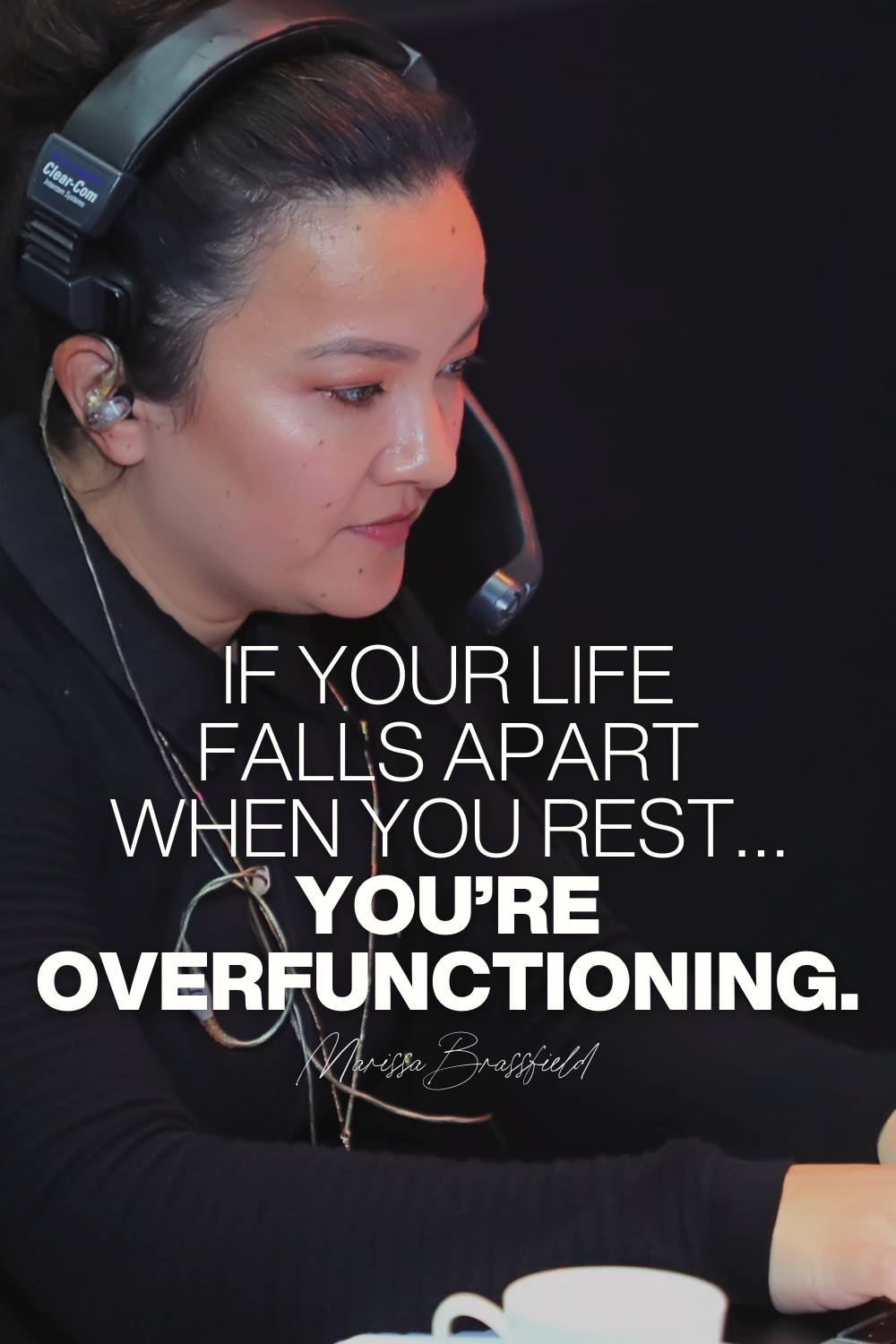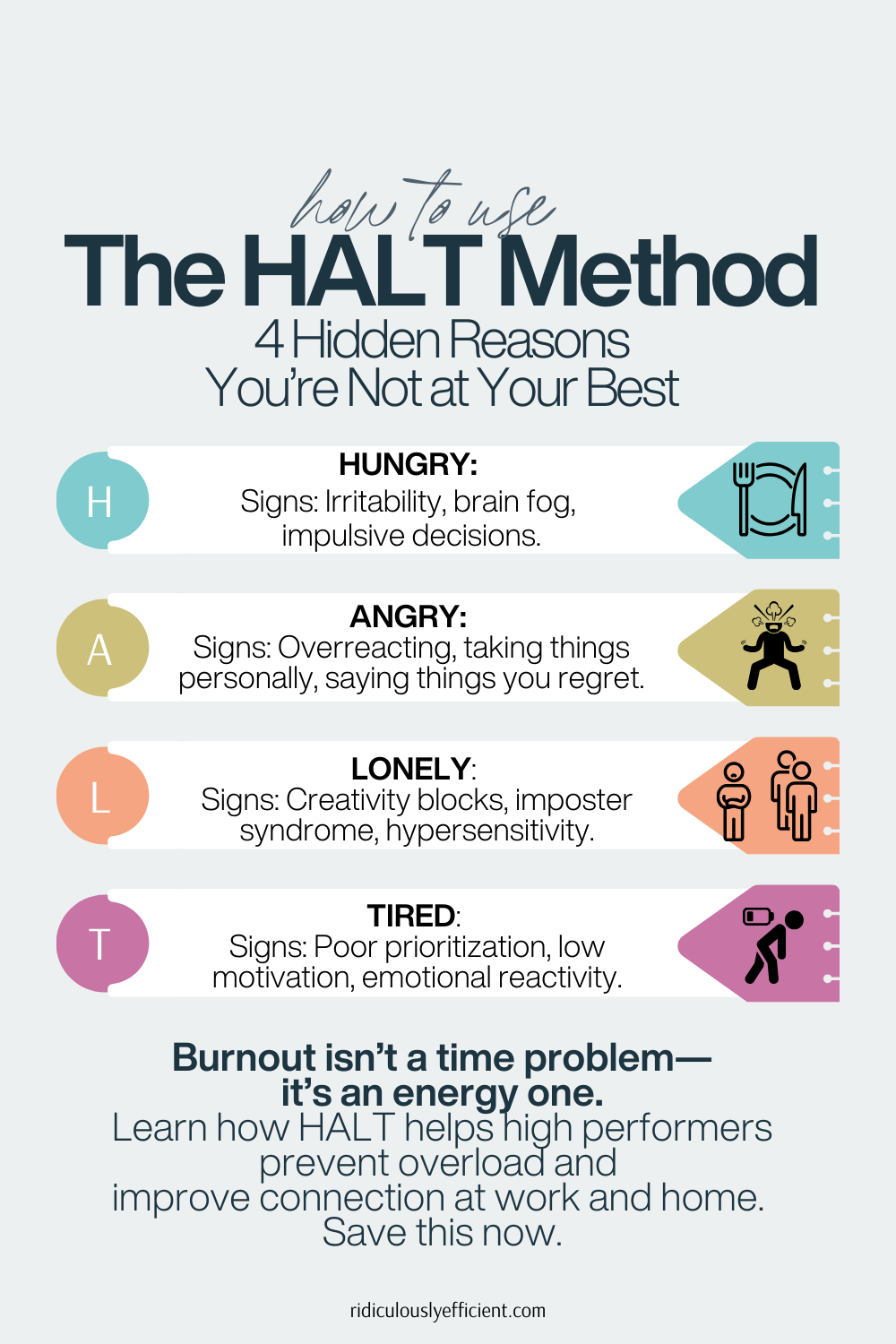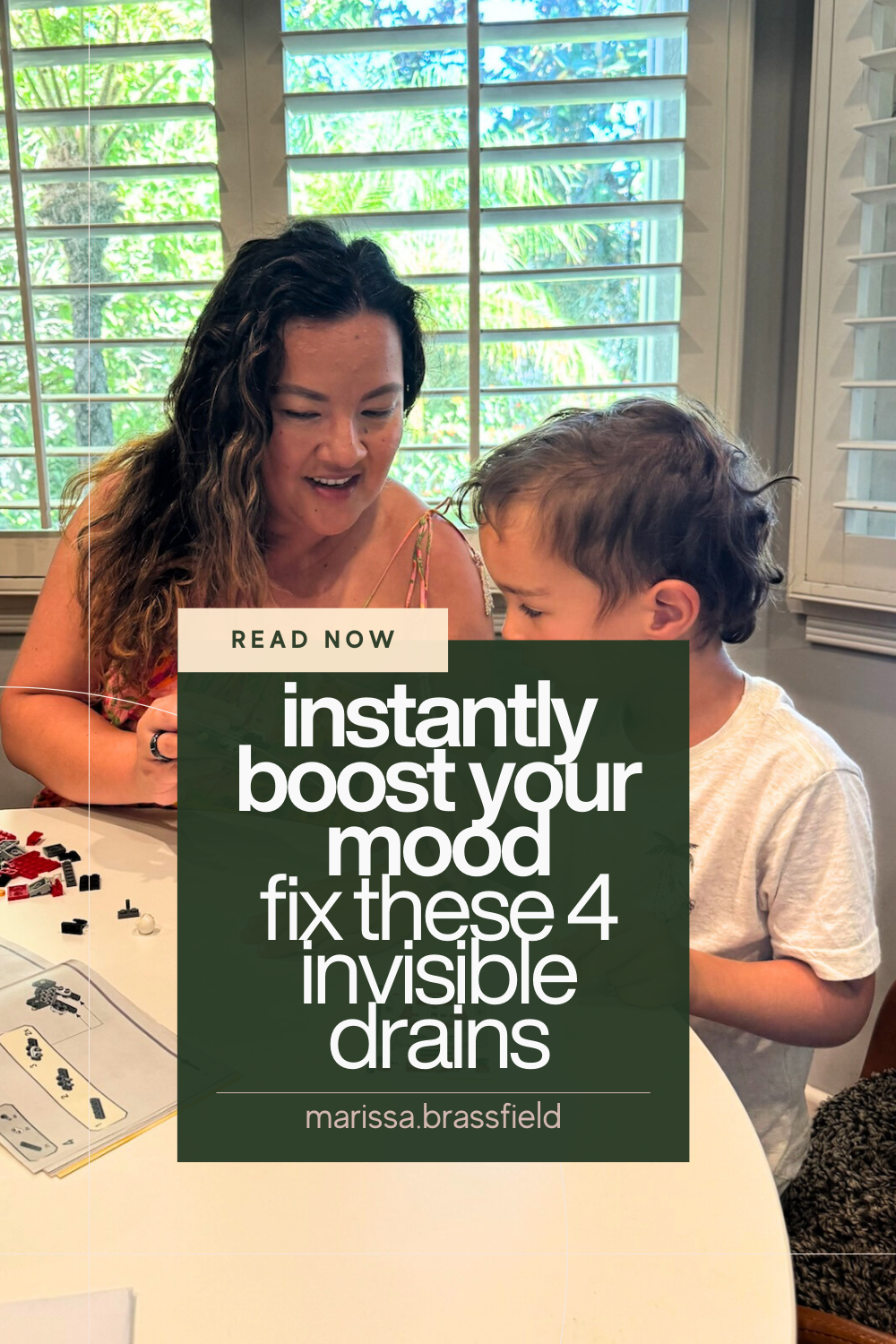
Your productivity crisis isn't a time management problem. It's an energy management emergency.
I discovered this truth the hard way—after burning out for the third time in late 2022.
On paper, everything looked successful. My calendar was meticulously organized. My business was growing. I was speaking at events around the world. But privately, I was one missed deadline away from collapse.
When I finally hit my breaking point, I realized something profound: I had spent years optimizing my schedule while completely ignoring my fundamental human needs.
This pattern isn't unique to me.
I've coached executives and entrepreneurs across 13 countries, and I've seen this same story play out repeatedly. We sacrifice our basic needs on the altar of productivity, then wonder why we're not producing our best work or showing up fully for the people who matter most.
The solution isn't another time management system.
It's a complete rethinking of how we manage our energy and attention.
Work-Life Balance for High-Performing Professionals: The Productivity Paradox
Most high-achieving professionals I work with have mastered being busy. Their calendars are color-coded monuments to productivity. They're responsive, reliable, and always "on."
But they've designed for output, not freedom—and certainly not connection.
Here's what nobody tells you when you're climbing the ladder of success: If your life falls apart when you rest, you're not thriving. You're overfunctioning.
When I interviewed 44 child development experts and visionary educators while preparing for motherhood, I discovered something that transformed not just my parenting approach, but my entire philosophy around work and connection:
Quality connection doesn't require more time. It requires better presence.
Just 6-20 minutes of full, undistracted attention creates deeper bonds than hours of partial presence. This principle applies whether you're connecting with:
- Your child
- Your team member
- Your client
- Your partner
- Yourself
The science is clear: Our brains register true presence differently than distracted time.
When you're fully there—no phone, no multitasking, no divided attention—you signal "you matter" in a way that registers deeply in the other person's nervous system.
The HALT Framework: Self-Care for Busy Professionals and Working Parents
After studying high performers across industries, I've found that our most significant productivity blocks and relationship challenges often stem from ignoring four fundamental human needs.
This is where the HALT framework becomes transformative:
- Hungry
- Angry
- Lonely
- Tired
Let's break this down and explore how each state impacts your performance and relationships—and what to do about it.
H is for Hungry: Nutrition Strategies for Busy Professionals
When you're hungry, your brain literally can't access its full executive function.
That brilliant solution? That critical decision? It's locked behind a biological barrier until your blood sugar stabilizes.
The Science: Low blood glucose impairs prefrontal cortex function, reducing your capacity for attention, emotional regulation, and complex decision-making.
Signs You're "Hungry" at Work:
- Difficulty focusing on complex tasks
- Increased irritability with colleagues
- Decision paralysis or impulsivity
- Fixating on short-term gains over long-term strategy
Practical Application for Professionals:
- Schedule important decisions after, not before, meals
- Keep protein-rich snacks accessible during intensive work blocks
- Build 5-minute nutrition breaks into your calendar for days with back-to-back meetings
- Consider time-restricted eating (if appropriate for your health needs) to optimize cognitive performance
- Experiment! Different phases of life (or month) can require flexibility
Parenting Application:
- Create a "hangry kit" for both you and your children
- Recognize that your child's meltdown (and your reaction to it) might simply be hunger
- Build consistent meal and snack times into family routines
A is for Angry: Emotional Regulation and Healthy Boundaries for Leaders
When you're angry (or anxious, frustrated, or emotionally activated), your emotional brain hijacks your rational mind.
The Science: Emotional activation triggers your amygdala, which can override higher cognitive processes. Your stress hormones—cortisol and adrenaline—narrow your perspective and reduce access to creative problem-solving.
Signs You're "Angry" at Work:
- Writing emails you later regret
- Taking criticism personally
- Jumping to negative conclusions about others' intentions
- Resistance to new ideas or perspectives
Practical Application for Professionals:
- Implement a personal "90-minute rule" before responding to triggering messages
- Create physical distance from the situation (a brief walk, change of environment)
- Practice tactical breathing (4-count box breathing) to regulate your nervous system
- Name the emotion explicitly to yourself ("I notice I'm feeling frustrated.” Another good frame is the "parts"—"part of me is feeling frustrated"—which part? why? )
Parenting Application:
- Model emotional regulation by narrating your own process ("I'm feeling frustrated right now, so I'm going to take a deep breath")
- Create a family "calm down corner" with tools for both children and adults
- Recognize when your reaction to your child is about your emotional state, not their behavior
L is for Lonely: Connecting with Your Team and Family in Quality Time
When you're lonely or feeling disconnected, your nervous system enters a subtle state of threat detection. Your creativity, innovation, and strategic thinking need safety and connection to fully activate.
The Science: Social isolation triggers the same neural pathways as physical pain. Persistent loneliness increases inflammation and stress hormones while reducing cognitive performance.
Signs You're "Lonely" at Work:
- Difficulty generating creative solutions
- Increased sensitivity to workplace politics
- Feeling like an impostor despite clear evidence of competence
- Reluctance to share ideas or vulnerabilities
Practical Application for Professionals:
- Schedule brief (10-15 minute) connection calls between deep work blocks
- Create structured "connection moments" at the beginning of team meetings
- Establish a "professional support triangle" of trusted colleagues you can reach out to
- Consider how your physical workspace supports or hinders meaningful connection
Parenting Application:
- Schedule 10-minute "special time" with each child daily, where they lead the activity
- Create family rituals that don't require extensive planning (family high-five before leaving the house)
- Remember that modeling healthy connection for your children is as important as connecting with them
T is for Tired: Time Management for Working Parents and Executives
When you're tired, you're not just less productive—you're less you. Your values, vision, and purpose all get muted.
The Science: Sleep deprivation impairs glucose metabolism (making you more susceptible to the "Hungry" state), reduces emotional regulation (increasing the "Angry" state), and diminishes social cognition (amplifying the "Lonely" state).
Signs You're "Tired" at Work:
- Difficulty prioritizing important over urgent tasks
- Reduced ethical decision-making capacity
- Compromised communication skills
- Inability to generate enthusiasm for meaningful work
Practical Application for Professionals:
- Build sleep consistency rather than just focusing on sleep quantity
- Schedule your most cognitively demanding tasks during your natural energy peaks
- Consider strategic power naps (10-20 minutes) for afternoon energy dips
- Design your evening routine to support sleep quality (blue light management, wind-down rituals)
Parenting Application:
- Recognize that your parenting capacity directly correlates with your rest
- Create "rest rotations" with your partner or support system
- Remember that modeling healthy rest for your children is a gift to their future selves

Creating Healthy Boundaries: Implementing the HALT Method for Work-Life Balance
The HALT check itself takes just 30 seconds:
- Am I Hungry?
- Am I Angry?
- Am I Lonely?
- Am I Tired?
But to truly transform your productivity and relationships, consider these implementation strategies:
For Professional Performance: Time Management for Busy Executives
1. Create HALT boundaries in your calendar
- Build in nutrition breaks between meetings
- Block 10-15 minutes after emotionally challenging interactions
- Schedule brief connection points throughout your day
- Start every meeting with a team check-in and hear each other’s wins
- Protect your sleep by establishing tech curfews
2. Perform the HALT check before critical decisions
- Important emails or communications
- Strategic planning sessions
- Performance reviews
- Budget decisions
- Team conflicts
3. Design team cultures around HALT awareness
- Normalize meeting basic needs during the workday
- Consider how your leadership practices affect team members' HALT states
- Build connection rituals into team gatherings
- Review how company policies support or undermine HALT management
For Parenting as a Busy Professional: Quality Time with Children
1. Create connection bookends
- Begin and end your day with 6-10 minutes of undistracted attention with your children
- These moments of true presence matter more than hours of distracted togetherness
2. Implement family HALT checks
- Teach children to recognize their own hunger, anger, loneliness, and tiredness
- Create simple family systems for addressing each state
- Use HALT to decode challenging behavior (yours and theirs)
3. Focus on "Banner Days" instead of perfection
- Aim for two "Banner Days" per week—days your child goes to bed feeling fully seen, heard, and loved
- Two is enough. More is bonus.
- This standard is actually achievable for busy professionals
Work-Life Balance Success: The ROI of Setting Healthy Boundaries
When I restructured my entire business around energy management instead of time management, I made a radical change: I stopped working Mondays and Fridays completely.
When I decided to start working more again, I designed a schedule and working boundaries that allows me to take time off as needed, without warning, because I know that in this phase of life, flexibility is most valuable for me and my family.
By honoring my fundamental needs, I:
- Make better strategic decisions
- Communicate more effectively with clients
- Create higher-quality deliverables in less time
- Attract team members who shared my values
- Model boundaries that clients actually respected
The most successful professionals I work with aren't pushing through their limits. They're designing systems that respect their humanity.
Self-Care for Busy Professionals: The Science Behind HALT and Performance
This isn't "self-care" fluff. This is strategic performance optimization.
Consider these research-backed connections:
- Decision quality: Sleep-deprived decision-makers make riskier decisions with less accurate assessment of consequences
- Creative problem-solving: Even mild dehydration reduces cognitive flexibility and creative thinking by up to 31%
- Team dynamics: Teams with consistent connection rituals demonstrate 23% higher performance on complex tasks
- Leadership impact: Leaders who model appropriate vulnerability create psychological safety that increases team innovation by up to 37%
The HALT framework gives you a practical way to operationalize this research in your daily life.
Start Where You Are
You don't need to overhaul your entire life to begin benefiting from the HALT method. Start with one simple commitment:
This week, perform the HALT check before your three most important decisions or interactions.
Am I Hungry? Am I Angry? Am I Lonely? Am I Tired?
Address the need first, then approach the situation.
The most powerful productivity upgrade isn't a new app or morning routine. It's honoring the fact that you're a human being with fundamental needs—and designing a life that works with your humanity, not against it.
What changes when you view your basic needs as strategic assets rather than inconvenient weaknesses?
Your relationships deepen. Your decisions improve. Your energy expands.
And suddenly, you discover what true productivity actually means: not doing more things, but doing the right things, from a place of wholeness.

Get fresh takes on work-life alignment, leadership, and optimizing quality of life.


Member discussion